How to make a tissue box catapult
by Scott Dutfield · 24/03/2021
Launch things like LEGO bricks and pom-poms with this simple elastic catapult
If you’re under 18, make sure you have an adult with you.
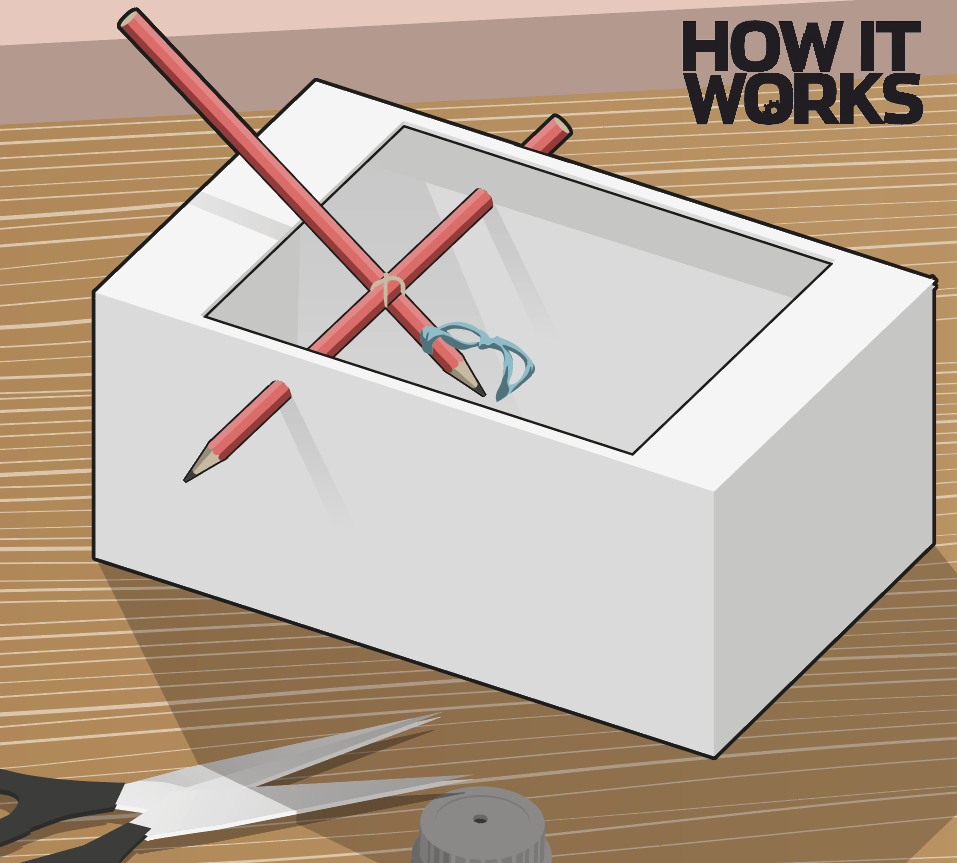
1. Build the base
Find a large tissue box or a small shoebox that’s structurally strong – if there are any open or weak areas, tape them together to make it more solid. Cut a rectangular hole in the top of the box and carefully make a hole in each side of it with a sharp pencil. Use an elastic band to attach two pencils together to form a cross, then poke each side of its ‘arms’ through the box holes, as shown.
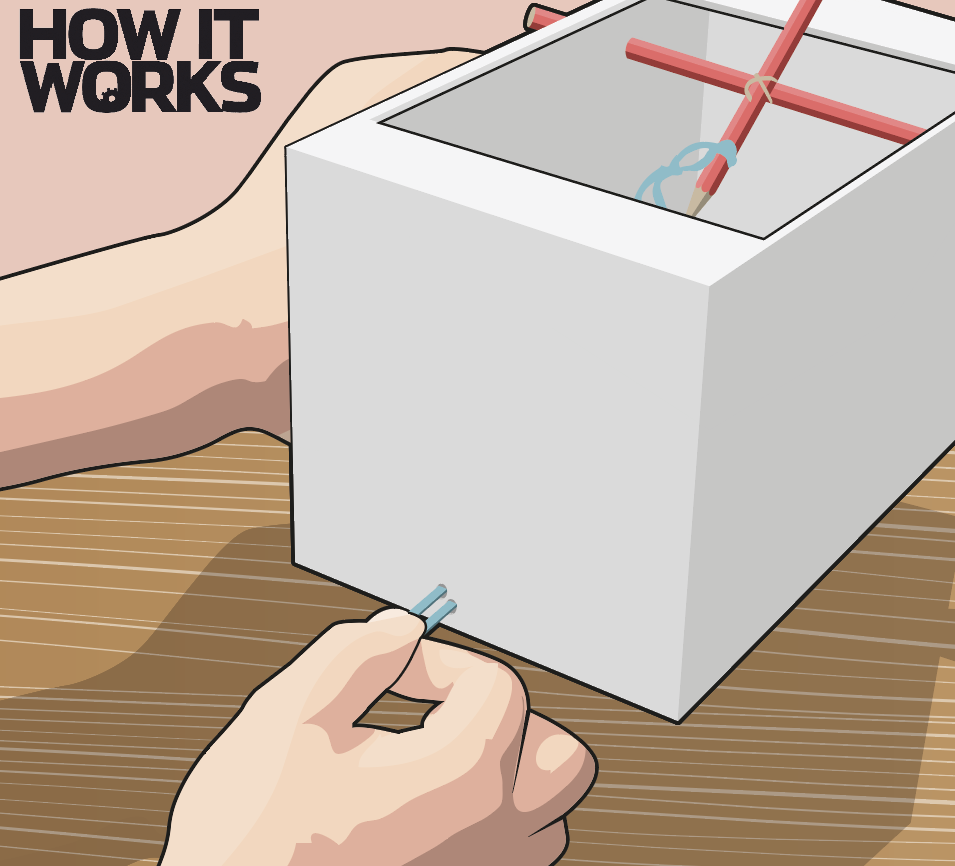
2. Create the pull
Wrap another elastic band around the bottom of the loose pencil, then make another small hole in the back of your box. Push the elastic band through, then push another pencil (or something long and thin like a pipe cleaner) through the loop that’s sticking out. You might need to use tape to secure this to the outside of the box. Now you’ve got power for your catapult.
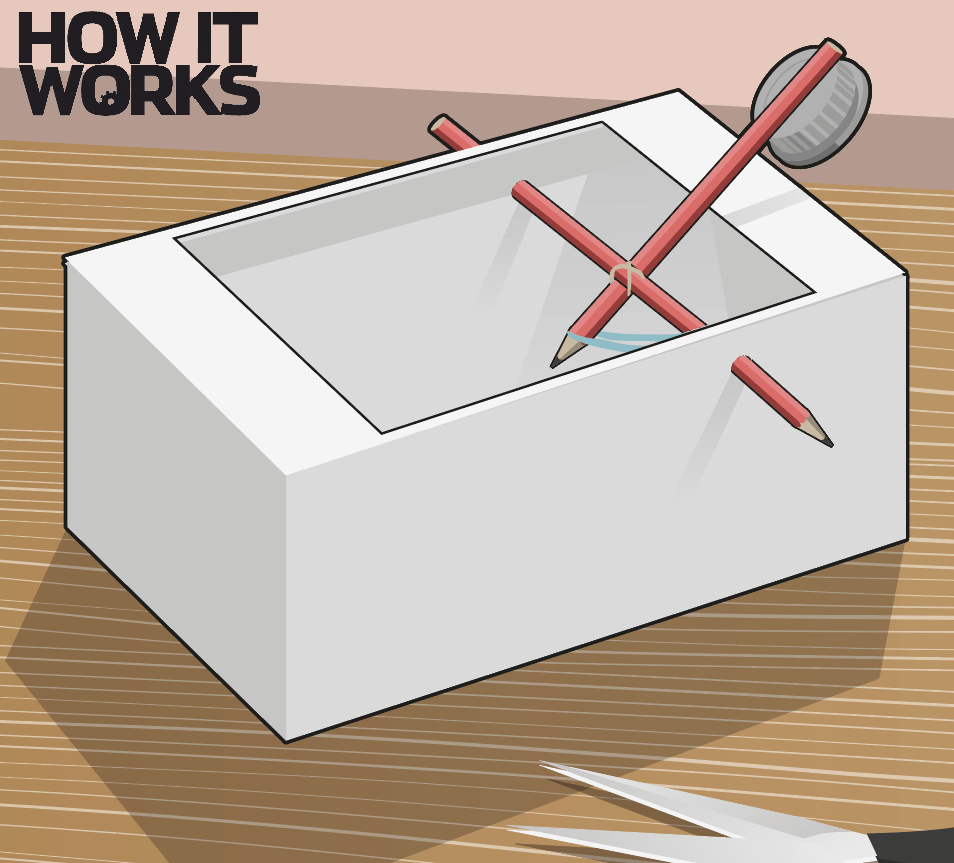
3. Add a cap
Next, you will need to create a grip for the things that you want to fling! You can use a milk bottle top for this. Using hot glue, carefully attach the bottle top to the pencil. This will give you the best grip, but you can also use a section cut out of an egg box and a combination of sticky tack and tape if you don’t have hot glue to hand. If you’re under 18 then ask an adult to help you.
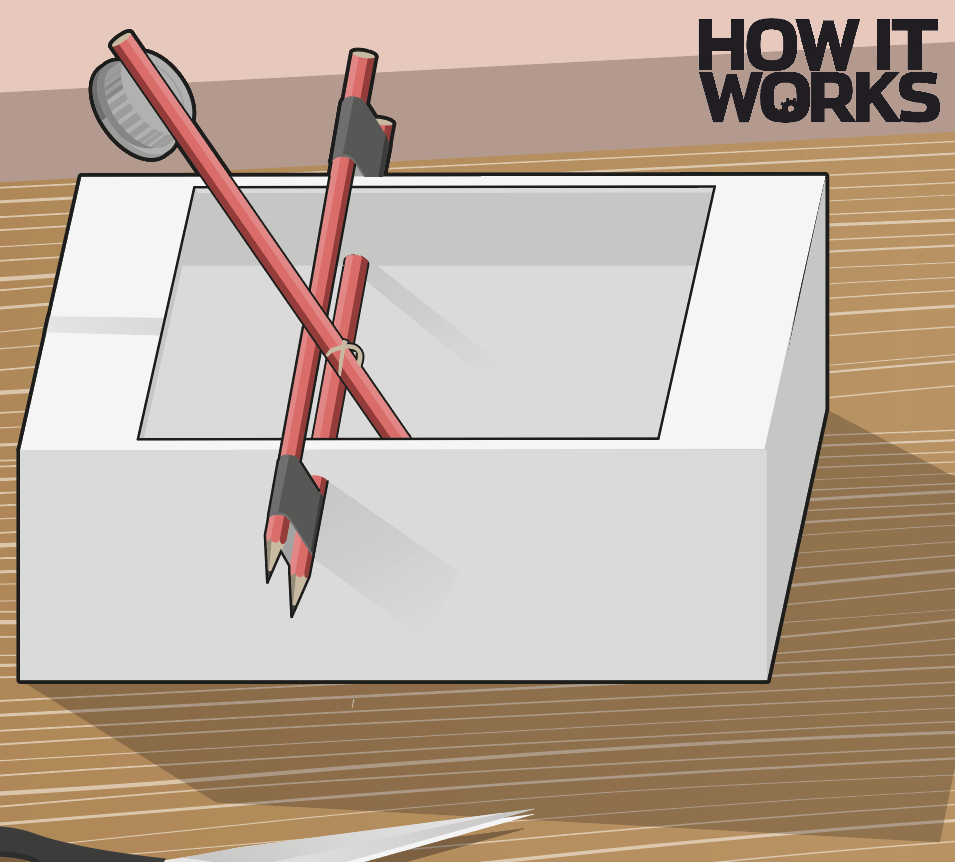
4. Make a stopper
Your catapult will work now, but without a stopper it won’t fire things very far. Use duct tape to attach another pencil to the first pencil over the top of the box, as shown above. That way, when the catapult reaches a certain point, the stopper pencil will hit the box, and the catapult will the hit the stopper. When the arm stops moving the item inside will keep its energy and go flying!
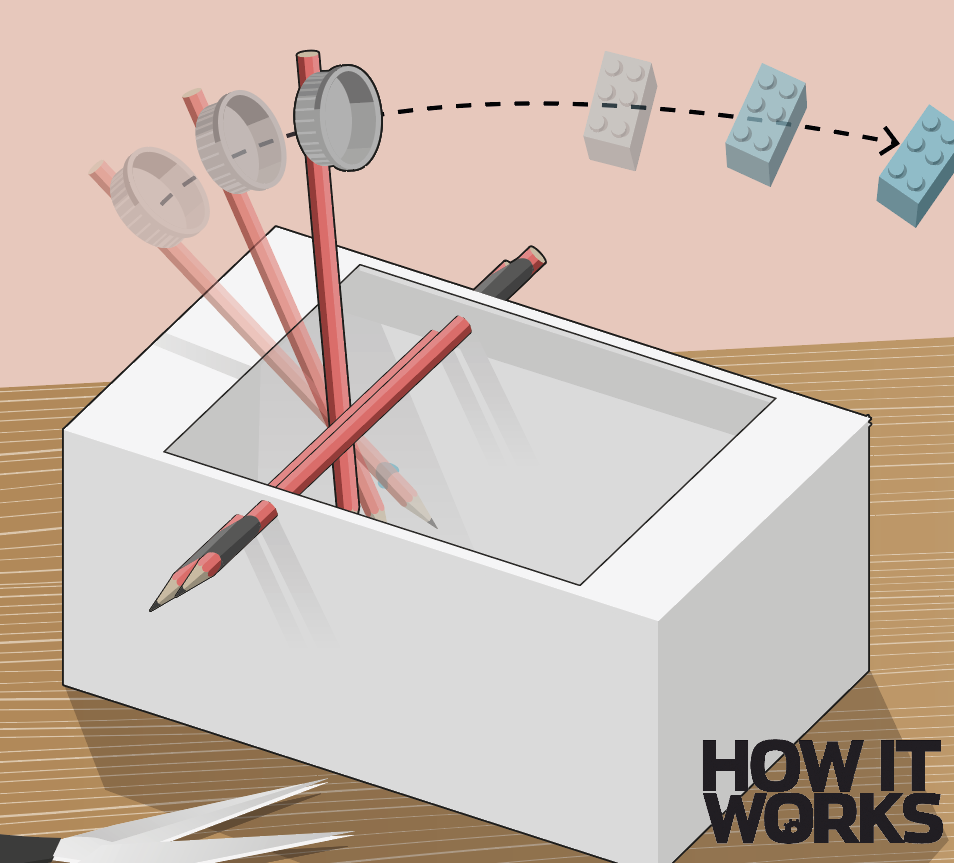
5. Time to fire!
Now you can load up your catapult and start firing. Try using different items, like small LEGO bricks, pom-poms or anything else you have around your house. Which items travel further, and why? You can also change the tension of your elastic band by attaching two smaller ones together or by using one large band. How does it affect how far your items fly?
In summary…
When you pull back on the arm of the catapult you are transferring potential energy to the elastic band. When you let go of the arm this potential energy turns into kinetic energy as the elastic pulls the arm backwards. The item in the grip has this energy too, and when the arm stops moving the item keeps going!
For more science and technology articles, pick up the latest copy of How It Works from all good retailers or from our website now. If you have a tablet or smartphone, you can also download the digital version onto your iOS or Android device. To make sure you never miss an issue of How It Works magazine, subscribe today!





